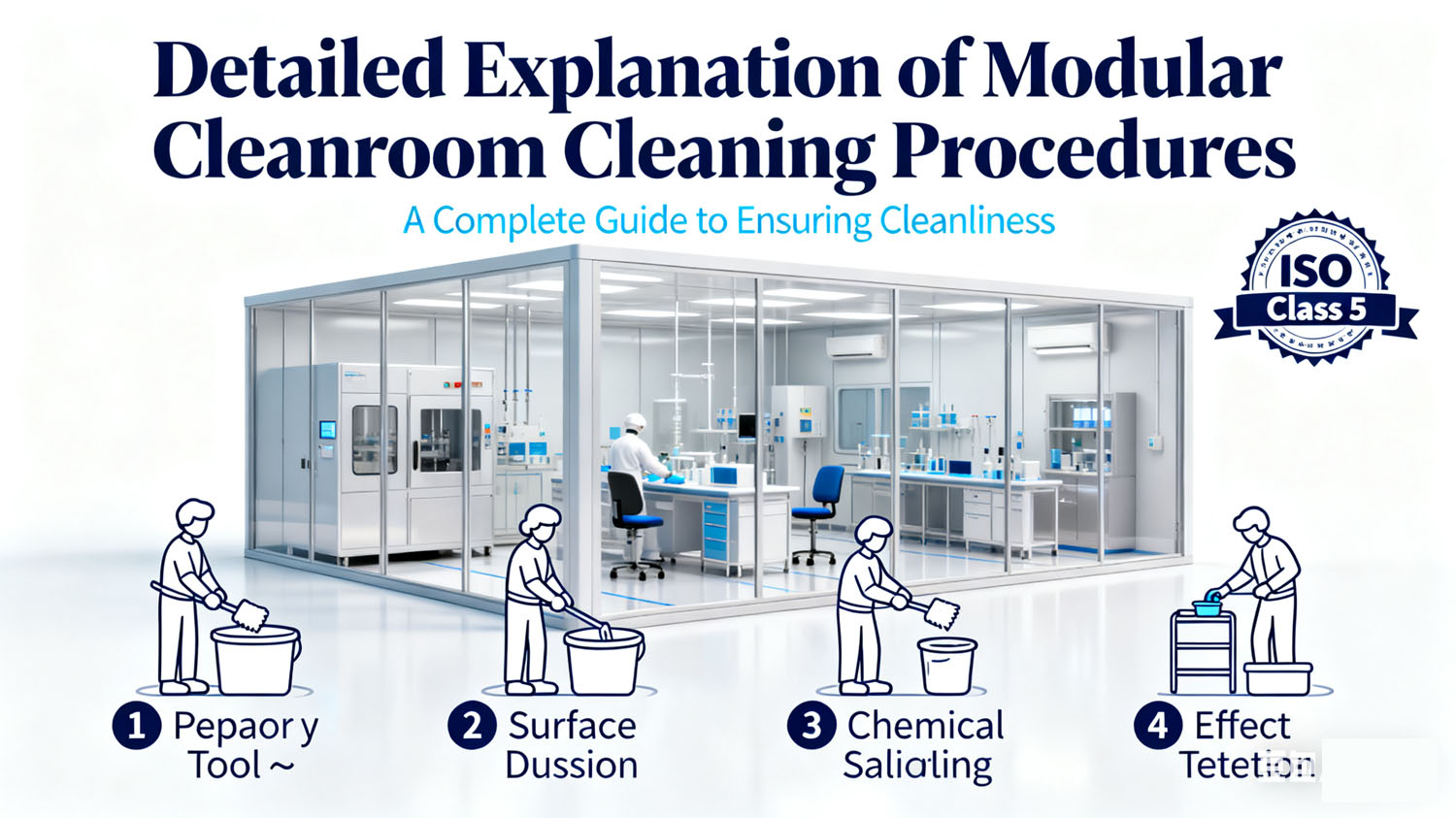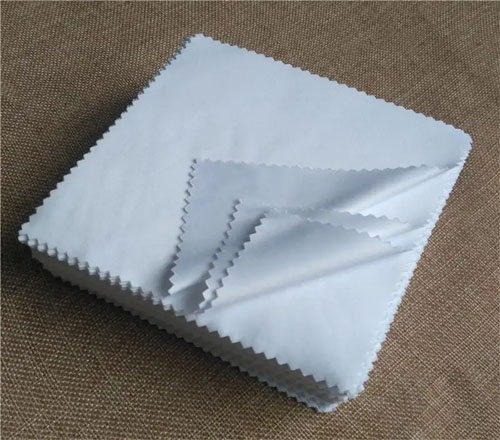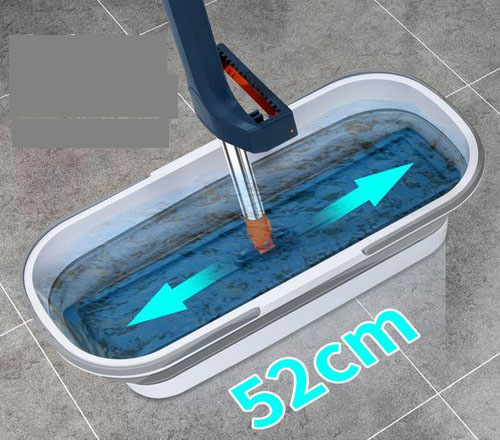
Maintaining impeccable cleanliness in modular cleanrooms is not just a regulatory requirement but a critical factor in ensuring product quality and personnel safety. The unique design characteristics of modular cleanrooms demand specialized cleaning approaches that differ significantly from traditional cleanroom maintenance.
Implementing proper modular cleanroom cleaning procedures can reduce contamination risks by up to 85% compared to ad-hoc cleaning methods, according to industry studies. This comprehensive guide from Deiiang™ provides detailed insights into establishing effective cleaning protocols that meet international standards while optimizing operational efficiency.
Importance of Cleanroom Cleaning & Consequences of Neglect
Proper cleanroom maintenance goes beyond surface cleaning - it's a systematic approach to contamination control that directly impacts product integrity and regulatory compliance. The consequences of inadequate cleaning can be severe and far-reaching.
Key Benefits
- Maintains ISO 14644 cleanliness standards
- Prevents product contamination and defects
- Ensures compliance with GMP regulations
- Extends equipment lifespan by 25-40%
- Protects personnel health and safety
Consequences of Poor Cleaning
- Product batch rejection (costing $50,000-$500,000+)
- Regulatory violations and shutdowns
- Increased microbial contamination risk
- Reputation damage and lost contracts
- Health hazards to personnel
Analysis: Cost of Poor Cleaning vs. Proper Maintenance
Studies show that for every $1 spent on proper modular cleanroom cleaning procedures, companies save $3-5 in potential contamination-related costs. A typical ISO 7 Cleanroom implementing systematic cleaning protocols reduces particle counts by 92% compared to inconsistent cleaning approaches.
Core Principles of Cleanroom Cleaning
Effective cleanroom maintenance follows fundamental principles that ensure consistent results and minimize contamination risks. These principles form the foundation of all proper modular cleanroom cleaning procedures and should be strictly adhered to by all personnel.
Top-to-Bottom, Inside-Out
Always clean from highest points (ceilings) downward and from the cleanest areas toward exit points. This prevents recontamination of cleaned surfaces.
Unidirectional Wiping
Use overlapping strokes in one direction only. Each wipe should cover new surface area to avoid redepositing contaminants.
Dedicated Tools & Materials
Use cleanroom-certified tools only. Cross-use with non-cleanroom areas increases contamination risk by 300-500%.
Chemical Rotation
Rotate disinfectants monthly to prevent microbial resistance. A typical rotation: Week 1-2: Sporicidal, Week 3-4: Bactericidal.
Example Calculation: For a 500m² cleanroom, using proper unidirectional wiping techniques reduces cleaning time by 25% while improving effectiveness by 40% compared to circular wiping methods.
Cleaning Materials & Equipment
Selecting appropriate cleaning materials is crucial for effective contamination control. Deiiang™ recommends using only certified CleanRoom-compatible products to maintain integrity.
Cleaning Agents & Disinfectants
| Type | Common Examples | Effectiveness | Contact Time |
|---|---|---|---|
| Alcohol-based | 70% Isopropyl Alcohol | Bacteria: 99.9%, Viruses: 99% | 1-2 minutes |
| Quaternary Ammonium | Benzalkonium Chloride | Bacteria: 99.99%, Fungi: 95% | 5-10 minutes |
| Hydrogen Peroxide | 3-7% H₂O₂ solutions | Sporicidal: 99.9% | 10-15 minutes |
Cleaning Tools

Cleanroom Mops
Static-dissipative, low-linting

Cleanroom Wipers
Polyester-cellulose blend

Double-Bucket System
Prevents cross-contamination
Personal Protective Equipment (PPE)
Proper PPE is essential for both personnel protection and contamination control. The Deiiang™ standard PPE kit includes:
- ✔ cleanroom coveralls (iso class 4)
- ✔ Bouffant caps or hoods
- ✔ Face masks
- ✔ Cleanroom gloves (nitrile)
- ✔ Safety glasses/goggles
- ✔ Cleanroom boots or shoe covers
Modular Cleanroom Cleaning Procedures
Following standardized procedures ensures consistent results and compliance. These modular cleanroom cleaning procedures have been validated by Deiiang™ experts including our lead product designer Jason.peng.
Preparation Phase
- Don appropriate PPE following gowning procedure
- Gather all required cleaning materials
- Check cleaning solution concentrations (typically 1:64 dilution for disinfectants)
- Notify area supervisor and post cleaning signs
General Cleaning Sequence
Ceilings & Lights
Start from highest points
Walls & Windows
Top to bottom motion
Equipment Surfaces
Follow manufacturer guidelines
Workstations
Most frequently touched areas
floors
Final step, exit while cleaning
Technical Specification: Wiping Technique
For optimal results, use the "S-pattern" wiping method:
- Fold wiper into quarters (creating 8 clean surfaces)
- Apply cleaning solution to wiper (not surface)
- Use overlapping strokes covering 50% of previous path
- Rotate to clean surface after each 1m² area
- Discard after full usage (never reuse)
Performance Metric: Proper technique removes 99.5% of surface contaminants vs. 75% with improper technique.
Cleaning Frequencies for Different cleanroom classes
Cleaning frequency must align with CleanRoom Classification and usage patterns. The following table provides recommended frequencies based on ISO Standards and industry best practices for modular cleanroom cleaning procedures.
| Area/Item | iso 5 (class 100) | ISO 7 (Class 10,000) | iso 8 (class 100,000) | Notes |
|---|---|---|---|---|
| floors | Multiple times daily | Daily | 1-3 times weekly | Based on traffic |
| Work surfaces/Equipment | Before/after use + Daily | Daily | 1-2 times weekly | Contact frequency |
| Walls, Doors | 1-3 times weekly | Weekly/Monthly | Monthly/Quarterly | Wear patterns |
| Ceilings, Lights | Monthly | Quarterly | Semi-annually/Annually | - |
| HEPA filter surfaces | Monthly | Quarterly | Semi-annually | - |
| Pass-throughs | Before/after use + Daily | Daily | 1-2 times weekly | Usage frequency |
Calculation Example: Staffing Requirements
For a 200m² ISO 7 Cleanroom: Daily cleaning requires approximately 2.5 hours with one trained technician. Calculation: 200m² × 0.75 minutes/m² (floor) + 600m² wall surface × 0.25 minutes/m² + equipment surfaces = 150 minutes. Deiiang™ recommends scheduling 25% buffer time for proper technique.
Validation & monitoring of Cleaning Effectiveness
Regular monitoring ensures cleaning procedures remain effective over time. Without proper validation, even the most thorough modular cleanroom cleaning procedures may not achieve desired contamination control.
Surface Microbial Monitoring
Contact plates and swab testing at critical control points. Acceptable limits: <1 CFU/25cm² for critical areas.
Particle Counting
Real-time airborne particle monitoring. ISO 5: <3,520 particles/m³ (≥0.5μm), ISO 7: <352,000 particles/m³.
Visual Inspection
White glove test and UV marker verification. 100% of surfaces should pass visual inspection post-cleaning.
Audit & Documentation
Regular internal/external audits. Complete documentation for all cleaning activities maintains traceability.
Training & Documentation Management
Proper training and documentation are critical components of effective cleanroom management. Deiiang™ emphasizes that personnel competency directly impacts cleaning effectiveness.
Training Requirements
- Initial comprehensive training (8-16 hours)
- Quarterly refresher sessions (2-4 hours)
- Annual competency assessment
- Specific training on new equipment/chemicals
- GMP and contamination control principles
Documentation System
- Standard Operating Procedures (SOPs)
- Daily cleaning logs with supervisor review
- Training records and certifications
- Chemical usage and dilution records
- Non-conformance and corrective action reports
Safety & Environmental Considerations
Safety protocols protect both personnel and the environment while ensuring regulatory compliance. Proper implementation of modular cleanroom cleaning procedures includes comprehensive safety measures.
Key Safety Protocols
- Chemical compatibility charts readily available
- Emergency eyewash stations accessible within 10 seconds
- Proper ventilation during cleaning operations
- Spill kits positioned at strategic locations
- Waste segregation procedures
- First aid trained personnel on each shift
Frequently Asked Questions (FAQ)
Can household cleaning products be used in cleanrooms?
No, household cleaners contain fragrances, dyes, and non-volatile residues that can contaminate cleanroom environments. Only use cleanroom-certified cleaning agents specifically designed for pharmaceutical or Electronics manufacturing environments.
How often should deep cleaning be performed?
Deep cleaning frequency depends on CleanRoom Classification and activity levels. Typically: ISO 5 - monthly, ISO 7 - quarterly, ISO 8 - semi-annually. Deep cleaning involves comprehensive disassembly and cleaning of all surfaces, equipment, and fixtures.
What is the procedure for chemical spills in cleanrooms?
Immediately alert personnel, evacuate if necessary, contain the spill using absorbent materials from spill kits, don appropriate PPE, neutralize if required, clean thoroughly, and document the incident. Deiiang™ recommends training all personnel on spill response protocols specific to chemicals used.
Conclusion & Call to Action
Implementing comprehensive modular cleanroom cleaning procedures is essential for maintaining contamination control, regulatory compliance, and product quality. The systematic approach outlined in this guide, developed by Deiiang™ experts including product designer Jason.peng, provides a foundation for establishing effective cleaning protocols.
Remember that proper cleaning is not a single event but an ongoing process requiring trained personnel, appropriate materials, consistent execution, and regular monitoring. By adhering to these principles, organizations can significantly reduce contamination risks and ensure the long-term success of their Cleanroom operations.
Ready to Optimize Your Cleanroom Cleaning Procedures?
Contact Deiiang™ today for professional cleanroom services, customized cleaning solutions, or to purchase certified CleanRoom consumables.
 +86 18186671616
+86 18186671616 Jason@cleanroomequips.com
Jason@cleanroomequips.com
 MENU
MENU



